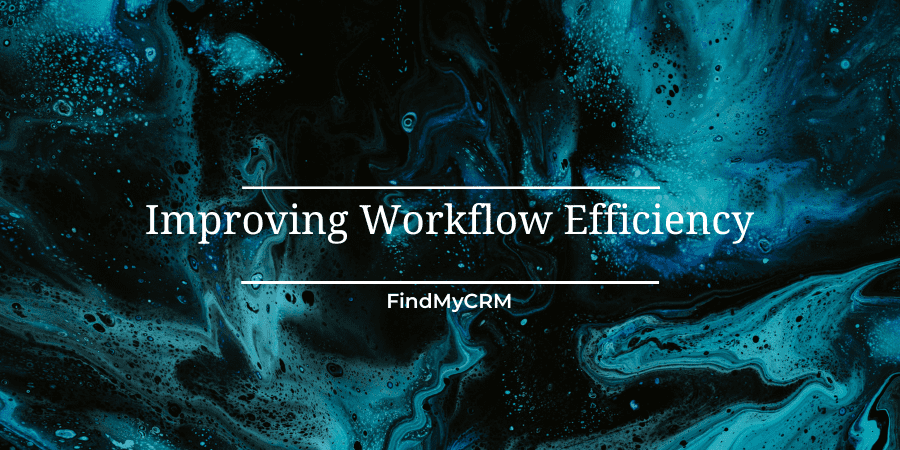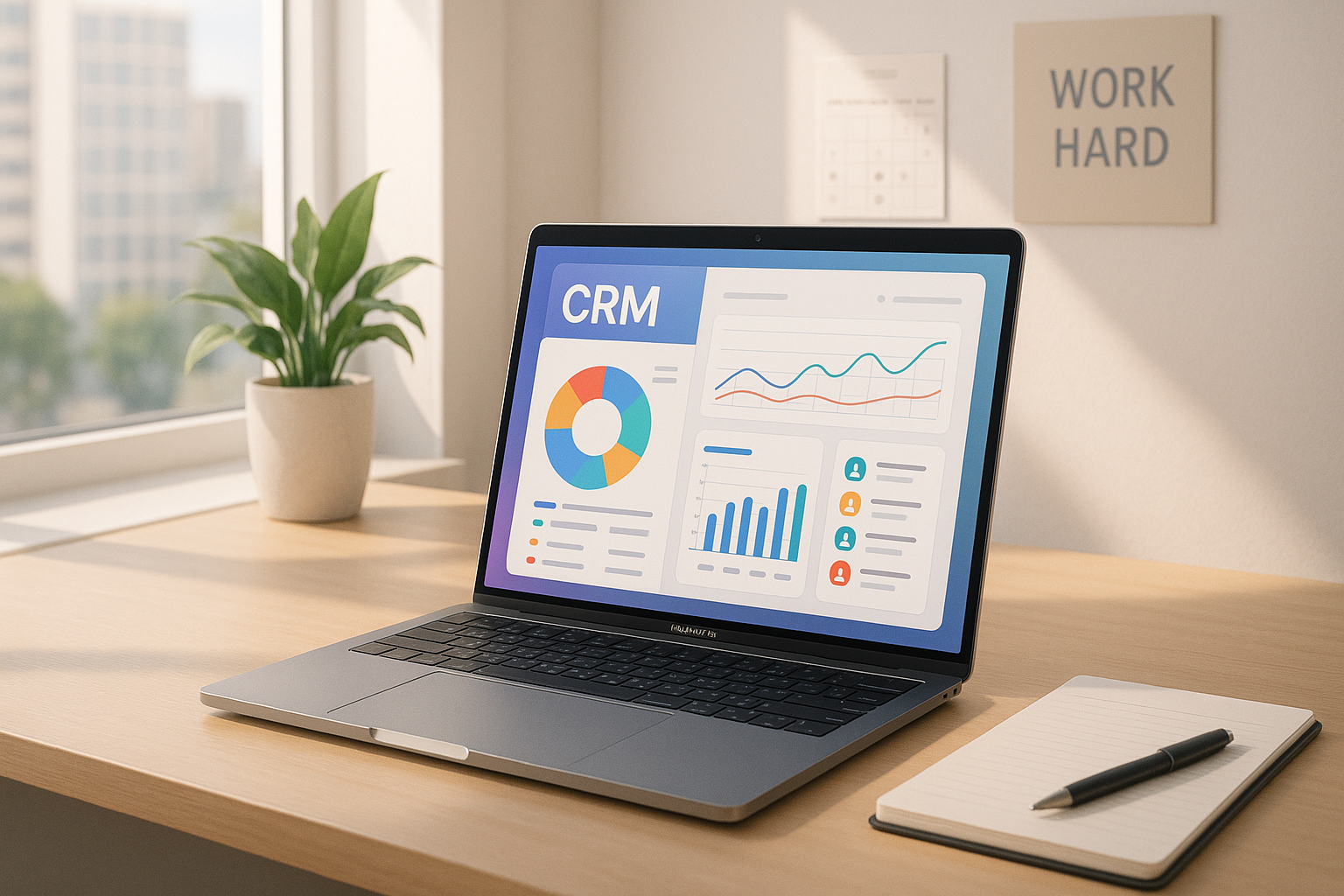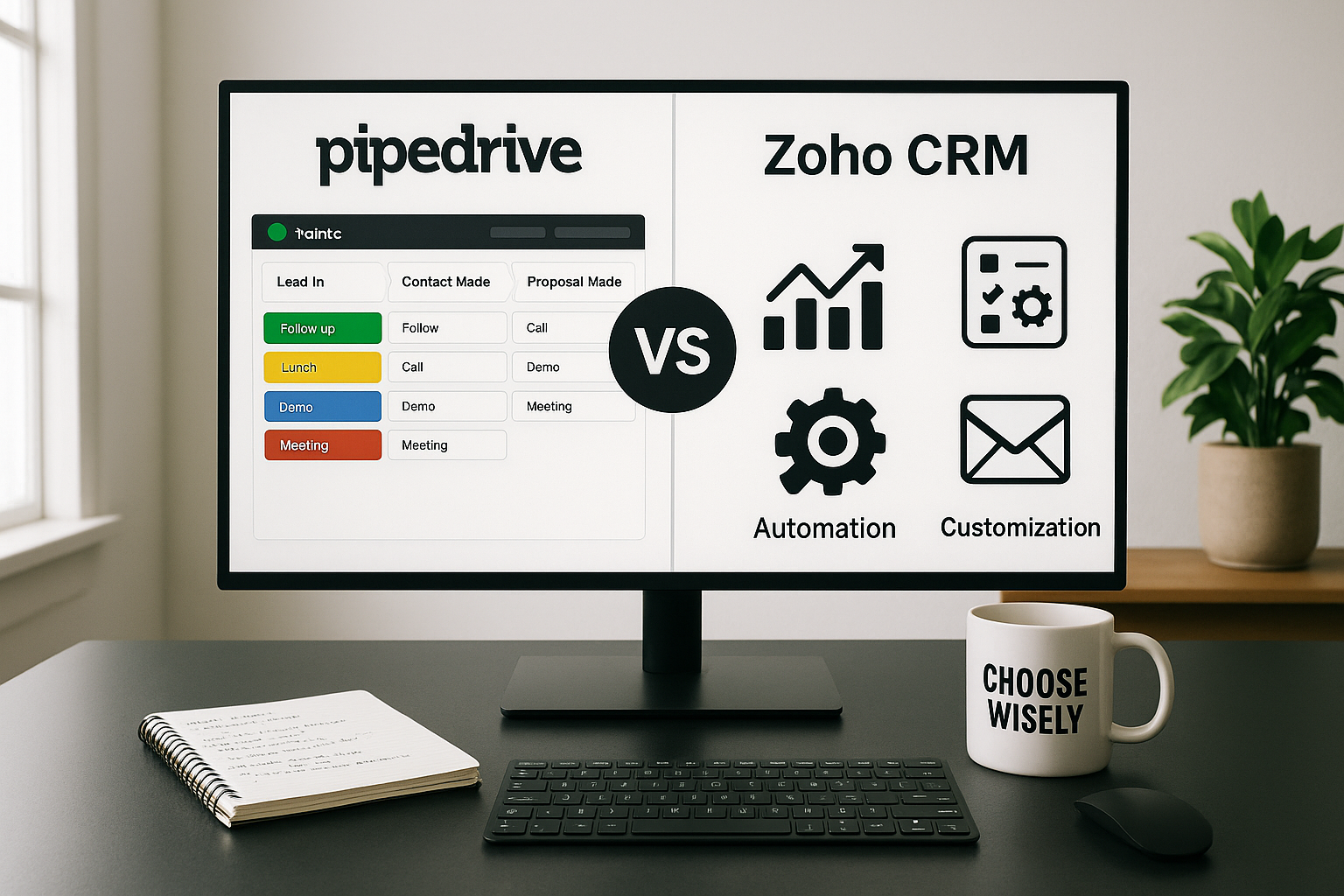Download Now: Free "10 Tips to Improve Workflow Efficiency at Your Company" eBook
Enhancing Workflow Efficiency: An Overview
Workflow efficiency refers to the effective utilization of resources, time, and effort to complete tasks within a business or organizational process. It involves streamlining workflows to maximize productivity and achieve desired outcomes promptly. An efficient workflow ensures smooth task execution with minimal delays, errors, or redundancies.
By eliminating unnecessary steps, optimizing coordination, and leveraging automation, teams can accomplish more in less time, enhance productivity, and improve output quality. Improving workflow efficiency is essential for organizations striving for operational excellence, meeting customer expectations, and staying competitive in today's dynamic business landscape.
By the way, such CRM systems can help you increase the efficiency of your company:
 |
 |
|
| Experience seamless CRM with Capsule. | Streamline your workflow and boost productivity with ClickUp. | Supercharge your sales and nurture customer relationships with Act!. |

Measuring Workflow Efficiency: Methods and Metrics
Measuring workflow efficiency involves using various methods and metrics to evaluate the effectiveness and productivity of a workflow. Several key approaches are commonly employed for this purpose:
- Cycle Time: This metric determines the time taken to complete a single workflow cycle, from initiation to completion. A shorter cycle time indicates higher efficiency as tasks are accomplished more swiftly.
- Throughput: Throughput measures the quantity of tasks or units processed within a specific timeframe. A higher throughput suggests increased efficiency, as more work is completed during the designated period.
- Error Rate: The error rate quantifies the number of errors or mistakes that occur within a workflow. A lower error rate signifies improved efficiency, indicating a smoother and more accurate workflow execution.
- Utilization: Utilization evaluates how effectively resources such as equipment, tools, or personnel are utilized within a workflow. Higher utilization rates indicate enhanced efficiency as resources are utilized optimally.
- Workload Balance: Workload balance assesses the equitable distribution of tasks among team members or departments. A balanced workload reflects improved efficiency by avoiding bottlenecks and ensuring even task distribution.
- Customer Satisfaction: Assessing customer satisfaction through surveys or feedback serves as an indicator of workflow efficiency. Satisfied customers signify efficient processes that meet their needs and expectations.
- Key Performance Indicators (KPIs): Organizations utilize specific KPIs tailored to their goals and objectives. These can include productivity metrics, cost per unit, or customer response time. Monitoring relevant KPIs provides insights into workflow efficiency.
- Process Automation: Measuring the degree of process automation within a workflow is crucial. Higher levels of automation indicate improved efficiency by reducing manual effort, minimizing errors, and expediting task completion.
By employing these measurement methods, organizations can evaluate the effectiveness of their workflows and identify areas for improvement. Regular monitoring and analysis of workflow metrics enable businesses to make informed decisions, implement process enhancements, and continually strive for greater workflow efficiency.

Objectives of Improving Workflow Efficiency
The goals of improving workflow efficiency encompass various key objectives. Organizations aim to enhance productivity by maximizing output while effectively utilizing available resources. Optimizing resource utilization ensures that assets such as equipment, materials, and personnel are utilized efficiently. By reducing bottlenecks and minimizing delays, organizations strive to maintain a smooth workflow that enables timely task completion.
Another essential goal is to minimize errors through error detection and prevention mechanisms, fostering a culture of continuous improvement. Streamlining processes eliminates unnecessary steps, simplifies workflows, and reduces complexities. Overall, the objectives of workflow efficiency improvement include achieving cost savings, improving output quality, meeting project deadlines, enhancing customer satisfaction, and gaining a competitive advantage.
Additionally, promoting employee satisfaction through the reduction of repetitive tasks, fostering collaboration and effective communication, and creating a conducive work environment are important aims. Ultimately, the focus lies in maximizing efficiency, optimizing resource allocation, and driving sustainable growth and success for the organization.

Factors Behind Workflow Inefficiencies
There are several factors that contribute to inefficiencies in workflow within organizations. These factors include:
Irrelevant or unproductive tasks
When tasks that do not add value or align with the overall goals of the workflow are included, it can lead to inefficiencies. Identifying and eliminating such tasks is essential for streamlining the workflow and improving efficiency.
Poor information coordination
Inefficient communication and coordination of information among team members can result in delays, errors, and misunderstandings. Effective sharing and coordination of information are crucial for a smooth workflow and improved efficiency.
Unorganized team management
Inadequate organization and management of teams can lead to inefficiencies. This includes unclear roles and responsibilities, insufficient coordination, and ineffective allocation of resources. Efficient team management is essential for optimizing workflow efficiency and achieving better results.
Human Errors
Errors made by individuals during the workflow can cause delays, rework, and quality issues. Addressing human errors through training, clear guidelines, and error prevention measures is important for improving workflow efficiency and reducing mistakes.
Manual Data Entry
Relying on manual data entry processes can introduce errors, slow down the workflow, and reduce accuracy. Leveraging automation technologies for data entry tasks can significantly enhance workflow efficiency and improve overall accuracy.
By recognizing and addressing these factors, organizations can work towards improving workflow efficiency, boosting productivity, and achieving better outcomes in their operations.
[Related Article: How to Transform CRM Implementation into Processes and Strategy Upgrade]

Boosting Workflow Efficiency
Improving workflow efficiency requires implementing a series of steps to optimize the workflow. Here are some important actions to consider:
1. Analyzing and Mapping the Current Workflow
Begin by thoroughly analyzing and mapping out the existing workflow. This involves gaining a comprehensive understanding of task sequences, dependencies, and decision points. Identify areas that may be inefficient or have room for streamlining.
2. Identifying and Resolving Workflow Bottlenecks
Recognize potential bottlenecks or areas where the workflow experiences slowdowns or obstacles. These bottlenecks can impede productivity and cause delays. Take proactive measures to address these issues, such as redistributing tasks, reallocating resources, or introducing process improvements.
3. Testing and Gathering Feedback
Conduct tests on the modified workflow and actively seek feedback from team members involved in the process. Evaluate the effectiveness of the implemented changes and solicit suggestions for further enhancements. This feedback serves as valuable insights to refine the workflow and enhance its efficiency.
4. Enhancing Communication Practices
Improve communication within the workflow by implementing effective communication channels and tools. Foster a culture of open and transparent communication among team members to facilitate collaboration, clarity, and timely information sharing.
5. Implementing Effective Training Methods
Provide comprehensive and tailored training to team members, equipping them with the necessary skills and knowledge related to the workflow. This includes training on relevant tools, processes, and best practices, ensuring that everyone is well-prepared to perform their tasks efficiently.
6. Prioritizing and Tackling Challenging Tasks Proactively
Identify and prioritize challenging or complex tasks within the workflow. By addressing these tasks early on, you can minimize potential delays and allocate sufficient time and resources for their successful completion.
7. Implementing Clear Role Separation
Define clear roles and responsibilities for each team member involved in the workflow. Assign tasks based on individual expertise and strengths, avoiding overlaps or uncertainties. This streamlines coordination, reduces confusion, and maximizes efficiency.
8. Boosting Employee Morale to Improve Workflow Efficiency
Prioritize the well-being and job satisfaction of employees to create a positive work environment. Recognize and reward their achievements, provide opportunities for growth and development, and foster a collaborative and supportive culture. When employees feel motivated and engaged, workflow efficiency is likely to improve.
9. Catering to Individual Employee Needs
Recognizing and addressing the unique needs of each employee is vital for improving workflow efficiency. It is essential to understand their strengths, preferences, and working styles. Offering flexible work arrangements, providing opportunities for skill development, and fostering a supportive environment that encourages collaboration and growth can significantly impact employee satisfaction and productivity. By catering to individual needs, employees feel valued and empowered, resulting in increased efficiency and overall job satisfaction.
10. Automating Repetitive Tasks
It entails identifying tasks that exhibit characteristics such as repetition, time consumption, and error susceptibility. By leveraging advanced automation tools and cutting-edge technologies, these processes can be streamlined, allowing employees to allocate their time to more valuable and strategic activities. The benefits of automation extend beyond efficiency gains; it also mitigates the risk of human error, improves accuracy, and expedites task completion. Adopting automation empowers organizations to optimize their workflows and unlock enhanced productivity and performance.
[Related Article: 10 CRM data management practices to improve your business]

Conclusion
In conclusion, optimizing workflow management practices is essential for achieving peak performance and success within your company. The ten tips provided in this article serve as valuable guidelines for enhancing workflow efficiency. By carefully analyzing existing workflows, addressing bottlenecks, soliciting feedback, improving communication practices, implementing effective training methods, proactively tackling challenging tasks, establishing clear role separation, boosting employee morale, understanding individual employee needs, and automating repetitive tasks, you can streamline operations, foster collaboration, and drive overall productivity.
Remember to consistently evaluate and refine your workflow management strategies to stay adaptable and meet the ever-changing demands of your business. Prioritizing workflow efficiency empowers your company to gain a competitive advantage, deliver exceptional outcomes, and cultivate a positive and thriving work environment.




(2).jpg)
